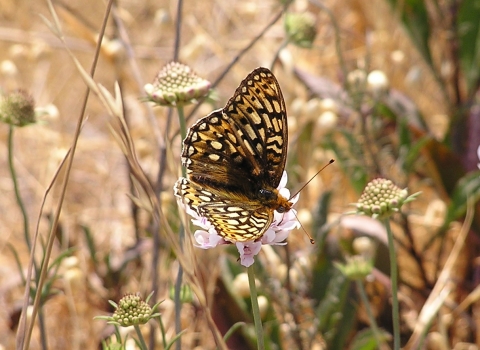DENVER — The U.S. Fish and Wildlife Service (Service) is announcing the proposed removal of the Ute ladies’-tresses (Spiranthes diluvialis) from the list of threatened and endangered species due to advancements in recovery for this species under the Endangered Species Act (ESA). The proposed rule is now available for public inspection, and the 60-day public comment period begins January 7, 2025.
This action follows a thorough species status assessment (SSA) and five-year review completed in 2023 recommending that this species is no longer in danger of extinction now or in the foreseeable future from stressors including drought, climate change climate change
Climate change includes both global warming driven by human-induced emissions of greenhouse gases and the resulting large-scale shifts in weather patterns. Though there have been previous periods of climatic change, since the mid-20th century humans have had an unprecedented impact on Earth's climate system and caused change on a global scale.
Learn more about climate change , invasive species invasive species
An invasive species is any plant or animal that has spread or been introduced into a new area where they are, or could, cause harm to the environment, economy, or human, animal, or plant health. Their unwelcome presence can destroy ecosystems and cost millions of dollars.
Learn more about invasive species , and development.
Ute ladies’-tresses is a terrestrial orchid found in wetland habitats in the western United States and Canada. The species has shown remarkable improvements in population size and distribution since the original listing under the ESA. At listing in 1992, the species was known to occur only in Utah and Colorado, and the primary threats to the species were habitat loss and modification due to water development and urbanization, and collection.
To date, the species is known to occur in eight states (Colorado, Idaho, Montana, Nebraska, Nevada, Utah, Washington, and Wyoming) and southern British Columbia, Canada. There are 18 populations and 63 occurrences across the species’ range. This surge in numbers is attributed to a combination of improved surveys, and targeted recovery efforts, including habitat management and protection. These proactive measures, supported by federal, state, and NGO partners, have played a crucial role in securing the species' future.
In the United States, approximately 37 percent of the species’ habitat occurs on federally owned or managed lands that afford protections for wetland habitats. The Clean Water Act provides some habitat protections for Ute ladies’-tresses occurrences in jurisdictional wetlands on federal, state, and private lands. In Canada, Ute ladies’-tresses is a schedule 1 endangered species under the Species At Risk Act.
To ensure a secure future for the Ute ladies’-tresses, the Service and recovery partners have committed to a comprehensive post-delisting monitoring period of at least 10 years to continue assessing its status. Recovery partners at federal agencies, state natural heritage programs, Colorado Natural Areas Program, and Bear River Land Conservancy have been instrumental in researching, monitoring, and conserving this species.
The proposed rule to remove this species from the list of endangered and threatened species will be published tomorrow in the Federal Register and is available for public inspection today in the Reading Room. The public may submit comments on this proposed action on regulations.gov, Docket No. FWS-R6-ES-2024-0115 beginning January 7, 2025.




